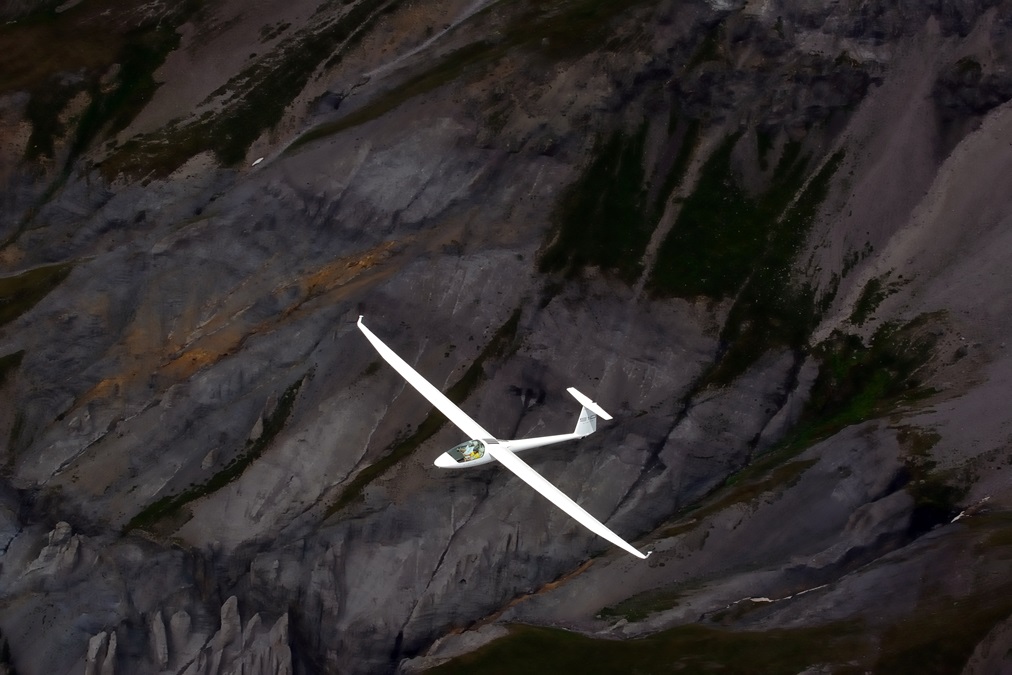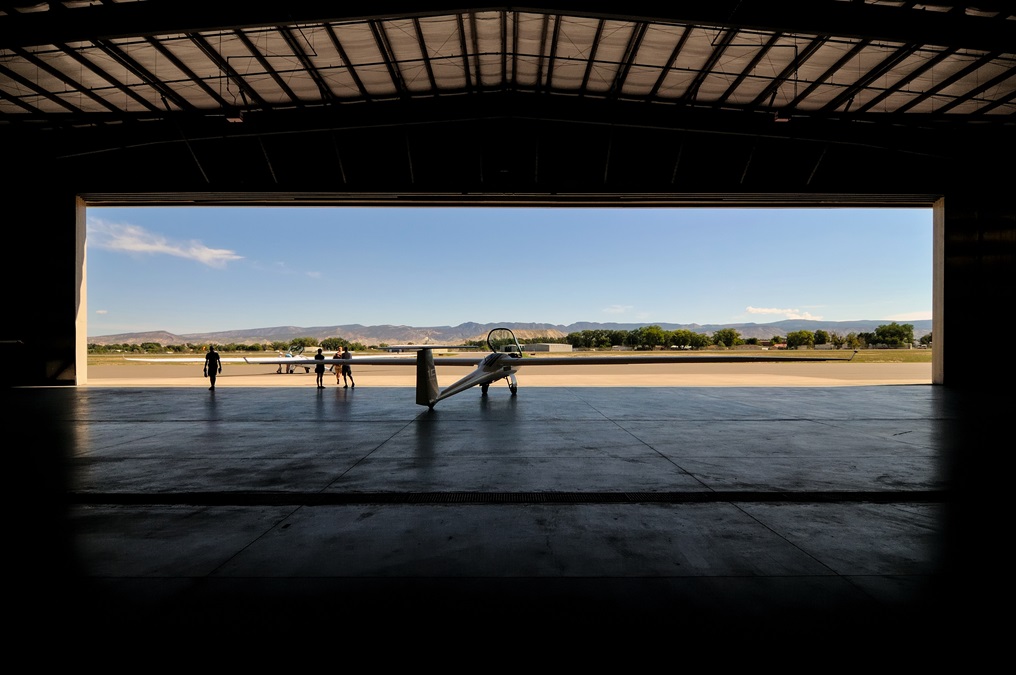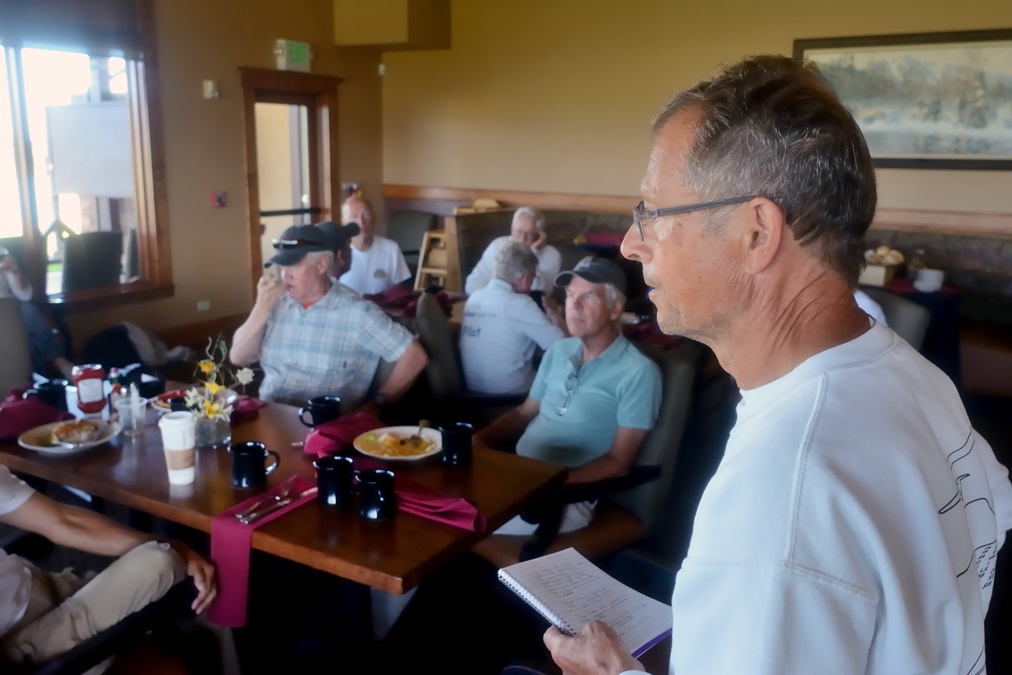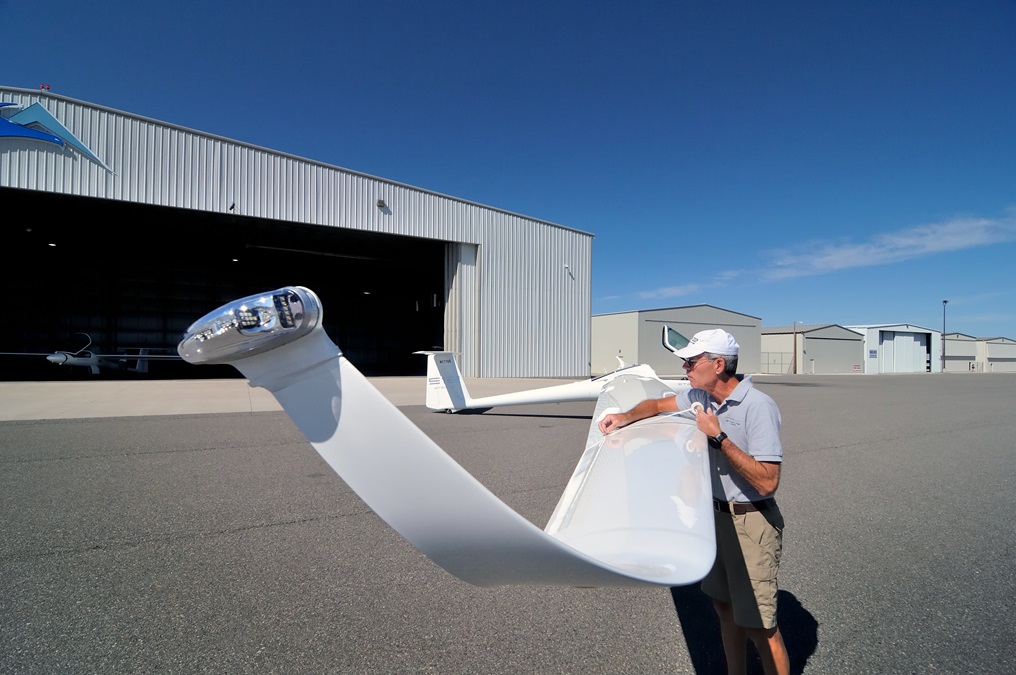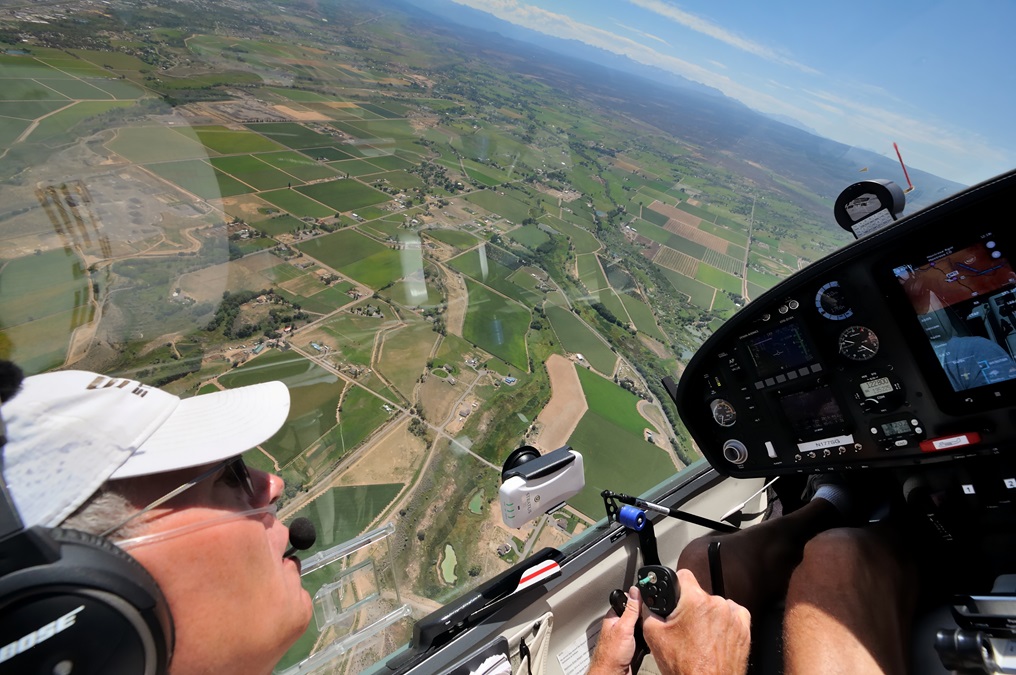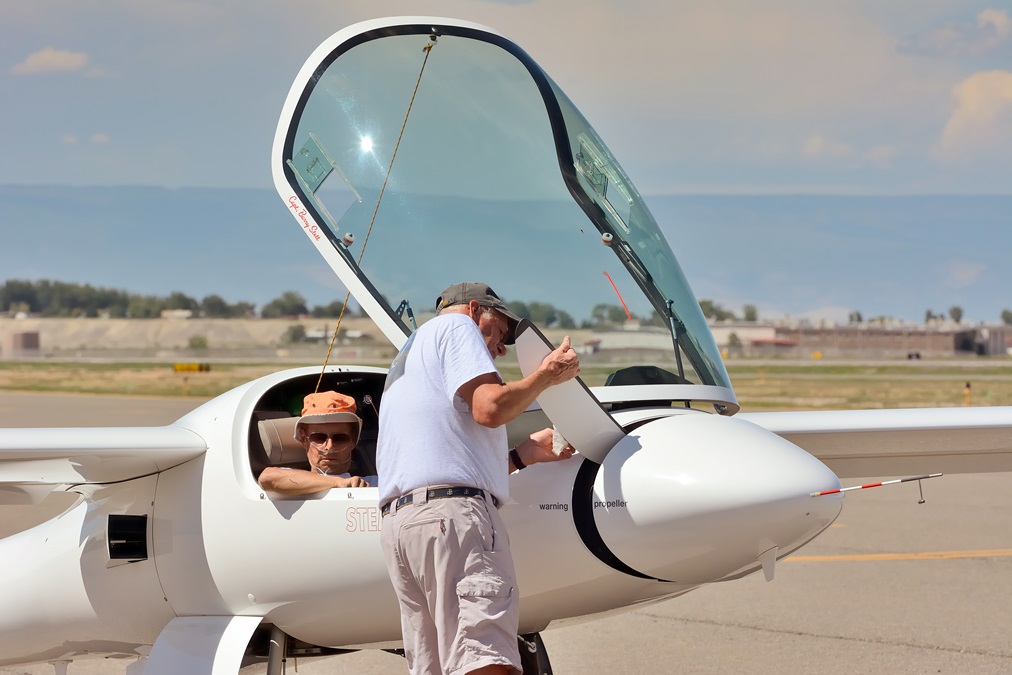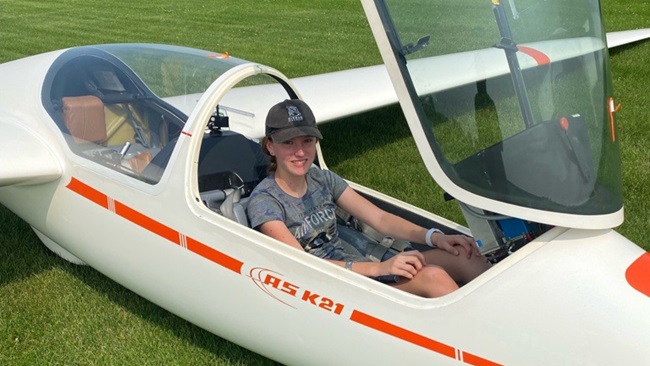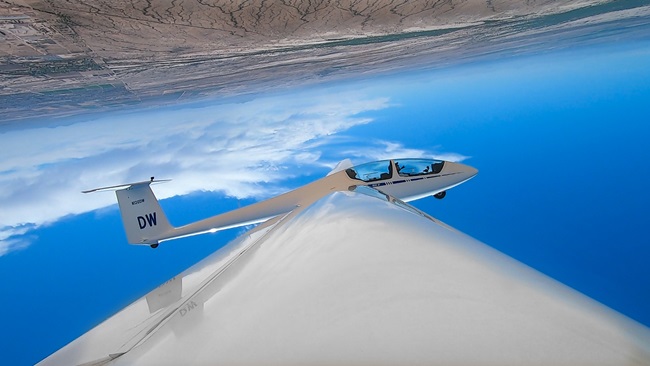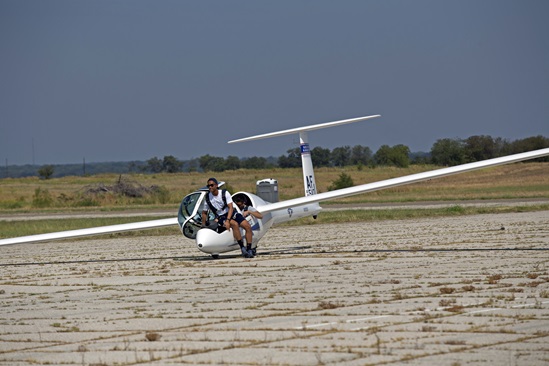Looking for lift
Stemme Soarfari stalks sometimes-elusive prey
Oh, and they’re on a soarfari.
“A soarfari is a soaring safari—like an African safari for soaring people,” said Barry Stott, a motorglider and powered-aircraft pilot who hosted the Stemme Soarfari in Montrose, Colorado, in August 2017.
The Stemme Soarfari was started by Marc Arnold about 15 years ago for a small group of friends to whom Arnold had sold motorgliders when he was the first Stemme importer, Stott explained. “We thought it would be fun to get together in the Rockies. They’ve moved it around to different places but primarily it’s been in Longmont, in eastern Colorado. It’s a wonderful get-together.”
Stott volunteered to organize and host the 2017 Stemme Soarfari in western Colorado. “We have people here from all over the country,” he said. “We even have a gentleman here from Switzerland—he didn’t bring his own plane. It’s an eclectic group.”
Not everyone is able to bring their motorgliders. “Fortunately the Stemme’s a two-seater, so we can accommodate owners who don’t have their planes.” The event drew 11 Stemme motorgliders, including two Stemme demonstrators—an S10 and a newer, larger S12—and a Schleicher ASH 31. A couple of participants have S12s on order.
You can’t sleep late when you’re on soarfari, but the days are relaxed and well-organized. A typical day starts with a group breakfast, followed by a weather briefing, then participants start making their way to the airport. “Here in Montrose, the temperature we need to get the thermals [developing] happens at 11:30 [a.m.], maybe 12 o’clock. We don’t usually get airborne before noon.”
The area usually provides great soaring conditions. “We get these booming thermals,” Stott explained. “Cloud bases are typically 18,000 to 20,000 feet out here on a good day, and the thermals can be 15 to 17 knots—that’s a really rapid rate of climb. “If we see a cumulus cloud, we get underneath it. It’s like getting on an elevator, just circling and going up,” he added. “You can get to the cloud base in minutes, and in Colorado you have a lot of altitude to play with. It’s very exciting.” Gliding distance between thermals is much greater when you have 10,000 to 15,000 feet of altitude to play with, Stott noted.
The terrain extending around Montrose Regional Airport is gorgeous, but some areas are inhospitable. “The locals call this ‘tiger territory.’ In other words, you don’t want to go down there, because there are tigers,” explained Wes Chumley of Goose Creek, South Carolina, a Stemme demo pilot. Not the four-legged, fanged variety—but other risks to life and limb. A motorglider’s engine eliminates that concern.
The August 21, 2017, total solar eclipse occurred on the first full day of the soarfari. Montrose experienced only 88 percent of the eclipse’s totality—and despite mostly clear skies, the reduction in solar heating killed soaring lift for the day. A couple of motorgliders ventured north toward the area of totality, but didn’t reach it; looking for lift on their return to Montrose, they found none at all. Pilots on the ramp during the partial eclipse said the temperature dropped by 20 degrees.
Marc Arnold of Boulder, Colorado, flew his Stemme S10–VT through the eclipse’s totality on his way to Montrose. “I had very low expectations for that trip,” he said. “The thought was if the eclipse happened at 11:46 [a.m.], I could watch it from high altitude and then glide to Montrose. I thought the eclipse itself would be a non-event—it was spectacular.” Arnold had an unobstructed view across 270 degrees of eclipse. “It was just a magical experience to be in a quiet glider when someone turned the sun off.”
The next morning’s weather briefing brought bad news. “There’s a shortwave trough moving across Colorado, bringing clouds and rain showers,” said Richard Kellerman of Kennett Square, Pennsylvania, who presented the briefing each morning. “I don’t see how we’ll get soarable weather today. Sorry I don’t have better news. I’m going to go see the Black Canyon,” part of the Gunnison National Park about 20 miles from the airport.
On Wednesday, August 23, good soaring conditions returned. Dan Marotta and his wife, Patti—who normally fly out of Moriarty, New Mexico—logged a more typical flight. “We took off and turned west and flew about three or four miles, and found a thermal, shut down the engine, and climbed up to about 12,000—that’s about 6,000 agl—and then we flew south to Ridgeway,” he said. They flew just east of Mount Sneffels, one of the highest peaks in Colorado, to Telluride, then followed a ridge northwest almost to Grand Junction—extending slightly to complete a triangle. “In soaring flying, completing a triangle gives extra points,” said Marotta.
Automatic Dependent Surveillance-Broadcast showed a lot of traffic inbound for Montrose, including three jets, “so we slowed down, hung out, and waited for everyone to land. Then we came in and landed,” he said
Their three-hour, 56-minute flight covered 200 nautical miles. “And we used maybe half a gallon of gas—something like that,” added Marotta, who, after the initial climb, didn’t restart the engine until after he touched down, so he could clear the runway more quickly.
Like most of the Stemme pilots, density altitude doesn’t intimidate Marotta, whose home airport is at an elevation of 6,200 feet and the “normal” density altitude is 9,000 feet. But pilots are aware, and safety is an emphasis at the soarfari. Almost all the motorgliders carry FLARM—short for “flight alarm”—an anticollision system invented in 2004 by three Swiss glider pilots and engineers to reduce the number of fatal midair collisions between gliders; several also are equipped with ADS-B. The pilots wear parachutes, as well. Stott gave each pilot a welcome packet that included Denver, Cheyenne, and Las Vegas sectional charts—Montrose isn’t far from their intersection—as well as motion sickness bags and disposable urinals for those, you know, long flights.
“It’s a very collegial form of flying,” Arnold said of motorgliding. “I love powered flight but in the soaring environment, you’re looking at the same circumstances through a completely different lens. Your success is based on identifying and exploiting the strongest lift in the area.”
In a sailplane or motorglider, “the only way the plane moves forward is by exploiting the lift that’s in the atmosphere. To power pilots, it’s invisible,” Arnold said. “Soaring really rings my bell,” added Arnold, who said he had flown powered aircraft for 25 years before he discovered soaring in 1989. “I could not believe something this joyful existed in aviation.”
A departing NetJets pilot who was advised of the glider activity contacted the soarfarians by radio and seemed impressed by the reported 14,000-foot altitudes. “Ridge lift or thermals?” he asked.
“Thermals. It’s the only way to go,” a motorglider pilot replied.
“Wow,” was the jet pilot’s understated reply.
Sometimes conditions aren’t what you expect. “None of the clouds we thought would work well, worked at all,” said Don Post of Stowe, Vermont, after a soarfari flight. “And a lot of stuff that we didn’t think would work, gave us good lift. We found some 1,000-foot [per minute] and 1,500-foot climbs. Any time you get to 16 [thousand feet], that’s good.” Soaring conditions in Colorado are a lot different than what he sees on the East Coast, Post added.
Robert Koch, who flies a Stemme S10 from his home airport in Zurich, Switzerland, relished Colorado’s clear air and high cloud bases. “In Switzerland the air is not so clear. We have a lot of humidity, and sometimes the visibility is limited to 10 to 20 kilometers.” Soaring at home often is limited by ceilings, Koch said. “The good thing about the Stemme is that I can reach someplace where I can soar,” added Koch, who has flown a 500-kilometer flight along the Alps to Austria and back. “That was a nice, good day.”
When you’re on a soarfari, the day’s experiences and accomplishments are shared not around a campfire, but during a cocktail hour and dinner back at the country club. Both events see lively conversation centered around—believe it or not—aviation and soaring.
The Soarfari tradition will continue with another Stemme Soarfari in Montrose, in early August. “The format will be a bit different this year, with the group splitting up either to do longer flights to different locations or just doing more local stuff around Montrose,” Stott said. “Part of the fun is moving around and trying different places.”
Email [email protected]

